The original St. Anthony’s Church, built in 1908, was located at 918 Liberty Ave., just a few blocks away from Rita’s childhood home. When Rita was baptized there, her mother took her to a side altar that housed a statue of Our Lady of Sorrows, dedicating her daughter to Mary under that title.
St. Anthony’s was an important center for the Italian community in the neighborhood, as parishes tended to be much more ethnically segregated back then than they are today. Rita’s mother found community and comfort at the parish and helped to organize events there. The location proved to be an enormous challenge, however, and the parish priest, Father Joseph Riccardi, sought to move the parish several blocks to the east to a better part of town.
 Old St. Anthony's Catholic church in Canton, Ohio. Photo courtesy of the Mother Angelica Museum
Old St. Anthony's Catholic church in Canton, Ohio. Photo courtesy of the Mother Angelica Museum
As Mother Angelica would later tell it, this plan angered the Mafia — they preferred to have the church in “their” neighborhood to lend the area, and their shady businesses, credibility. Mafia members would even bury their bootlegged liquor in the schoolyard, Mother later said, a practice that the priest wanted no part of. After waging a legal fight to allow the new church to be built in a different location, Riccardi prevailed, and the new church opened in 1927. Two years later, when Rita was 6 years old, Riccardi was shot to death in the church — widely believed to be a Mafia hit.
“They kept the bullet holes there [in the church] up until about 10 years ago,” Gaskell noted.
(Story continues below)
Mother Angelica spoke in later years of not getting along well with the nuns at St. Anthony’s School. In those days, being the child of a divorcee carried with it a deep stigma. Mae eventually pulled Rita out of St. Anthony’s.
“So [Mother Angelica] was really formed in the life of suffering to start with,” Gaskell said.
St. Anthony’s merged with another parish in 2011 to form St. Anthony’s All Saints.
McKinley High School
Rita attended McKinley High School, named after arguably the town’s most famous son, President William McKinley. She was a loner and her grades weren’t good, but things began to turn around when she was invited to become a majorette in the school’s marching band. Friends remember that role as bringing out a fun and outgoing side of her, but the pain of Rita’s home life and upbringing — especially with her mother always in dire straits — remained a source of great hardship.
“[W]hen I came home from school, I never knew if I would find her dead or alive. I couldn’t study or concentrate,” Mother Angelica later recalled.
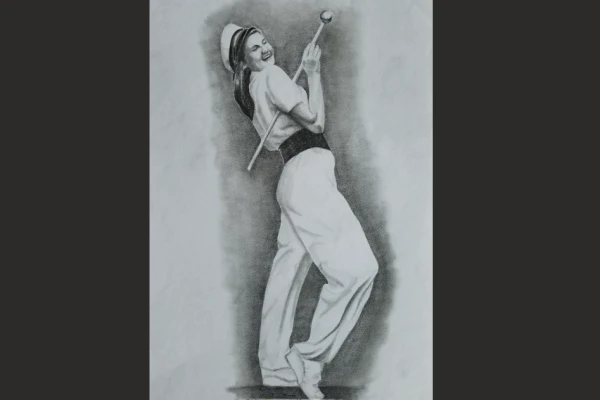 Mother Angelica when she was a majorette in high school. Mother Angelica Museum
Mother Angelica when she was a majorette in high school. Mother Angelica Museum
The former McKinley High School building is now a medical center in Canton.
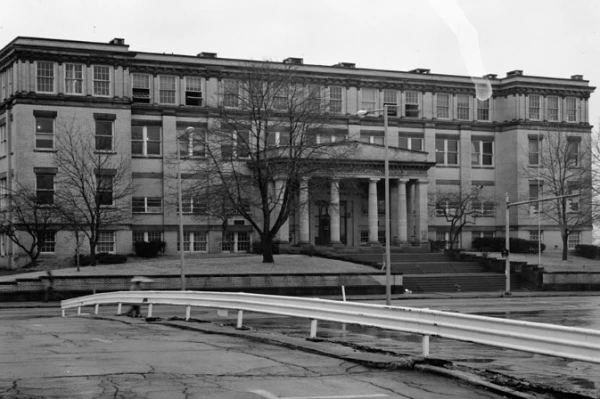
 The Old McKinley High School. Historic American Buildings Survey/Library of Congress
The Old McKinley High School. Historic American Buildings Survey/Library of Congress
Timken Roller Bearings
When the onset of World War II brought a lot of jobs to the steel town of Canton, Rita secured work at the Timken Roller Bearing Company in early 1942, working as a secretary to the company’s vice president for advertising.
The company is still in business and is still headquartered in North Canton, Ohio.
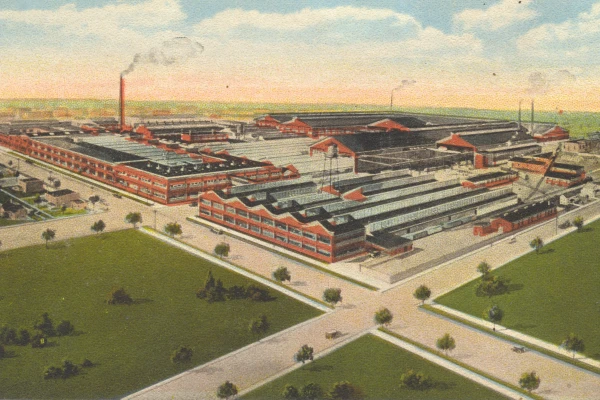 The Timken Roller Bearing Company. Public Domain
The Timken Roller Bearing Company. Public Domain
The home of Rhoda Wise
When she was just 18, Rita was beset by a serious and debilitating stomach ailment. Finding little relief from doctors, Rita’s mother, in desperation, took her to the home of Rhoda Wise, a local woman who had a reputation as a healer.
 Rhoda Wise's home. Photo courtesy of Rhoda Wise Shrine, Inc.
Rhoda Wise's home. Photo courtesy of Rhoda Wise Shrine, Inc.
Wise, who had converted to Catholicism after being introduced to the rosary, suffered greatly for years under her own serious medical problems, including a permanently injured foot and a 39-pound ovarian cyst first removed in 1932. Wise claimed she was completely healed of her ailments after receiving a visit from Jesus in her home. During Wise’s life, some 300–500 people a week came to her home seeking help, and many additional healings were reported.
One of those healings was of the skeptical Rita, who at the time was “so engrossed in survival that religion did not affect me,” she later admitted. Wise advised praying a novena to St. Therese, which Rita did. After doing so, she says her stomach ailment, which had caused her suffering for years, was healed overnight. She spent a lot of time over the next few years volunteering at the house and learning from Rhoda.
“That was the absolute turning point in her life. Completely changed her life,” Gaskell said.
<iframe width="560" height="315" src="https://www.youtube-nocookie.com/embed/jN_z3udMZuU" title="YouTube video player" frameborder="0" allow="accelerometer; autoplay; clipboard-write; encrypted-media; gyroscope; picture-in-picture; web-share" allowfullscreen></iframe>
“She started learning about the faith. She started volunteering at the Rhoda Wise home, helping with all the pilgrims because they were having thousands of pilgrims coming through there … her spirituality, I believe, was formed through Rhoda Wise. But see, Rhoda was a woman of suffering, right? So the two of them, they had so much in common, that bond of suffering.”
Rhoda Wise’s cause for sainthood has been opened, and she is currently a Servant of God. Her home remains, having been willed to Mother Angelica and EWTN and later deeded to the Rhoda Wise Shrine. Today, the Rhoda Wise House includes exhibits and a prayer grotto.
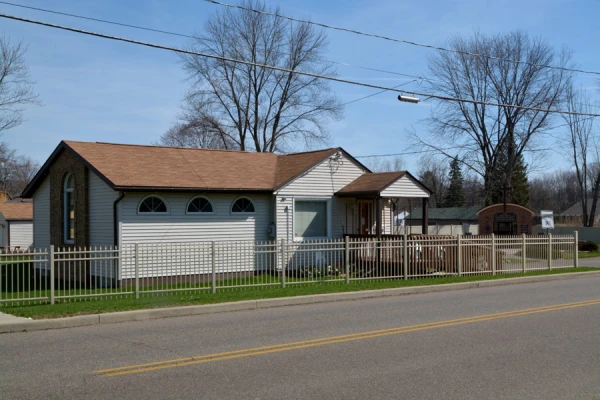 Rhoda Wise's house as it is today, as a shrine. Rhoda Wise Shrine, Inc.
Rhoda Wise's house as it is today, as a shrine. Rhoda Wise Shrine, Inc.
Sancta Clara Monastery
After her religious awakening, Rita grew in piety and fervor for her faith and perceived in prayer one day before the statue of Our Lady of Sorrows that she was called to a religious vocation. The idea was not supported by her mother, but Rita was determined to follow her call and entered a contemplative Franciscan community in Cleveland when she was 21 years old. It was there that Rita became Sister Mary Angelica of the Annunciation.
Later, Sister Angelica was given the opportunity to return to her hometown.
“She was sent to the new monastery here. There was an older couple that had a mansion that they donated to the diocese; they gave it to the Poor Clares, and they turned it into a monastery,” Gaskell explained. “And so she was sent here as one of the original nuns, which was great because she was back in her hometown.”
Gaskell said Wise, as well as her family, came to Sister Angelica’s profession. “I think everybody in her family went back to church after she became a nun,” she said.
It was at Sancta Clara that Sister Angelica not only grew in devotion and holiness but also honed her entrepreneurial skills by acting as foreman for many of the monastery’s architectural projects. She started a fishing lure business to support the monastery financially.
Later, Sister Angelica would promise God to build a new monastery in the South if she were healed of problems with her legs, which had come about after an accident with a floor scrubbing machine.
“She wanted to go down there to pray for all the racial tension, all the problems in the South. And he did let her walk again, but it was very difficult. She had to have braces; she was in pain pretty much for the rest of her life,” Gaskell said.
Finally, in 1961, Sister Angelica received permission to found a new monastery in Alabama, Our Lady of the Angels.
The Sancta Clara Monastery still exists today with a community of just over a dozen sisters.
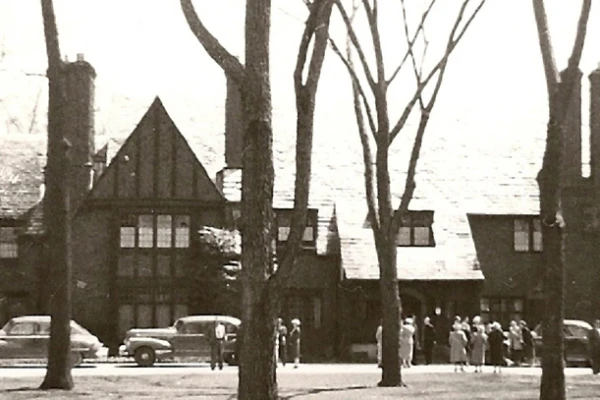 Sancta Clara Monastery in 1950. Mother Angelica Museum
Sancta Clara Monastery in 1950. Mother Angelica Museum
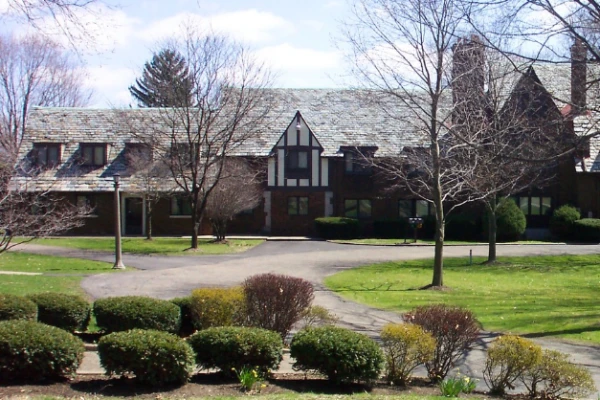 Sancta Clara Monastery today. Photo courtesy of the Mother Angelica Museum
Sancta Clara Monastery today. Photo courtesy of the Mother Angelica Museum
Jonah McKeown is a staff writer and assistant podcast producer for Catholic News Agency. He holds a Master’s Degree from the University of Missouri School of Journalism and in the past has worked as a writer, as a producer for public radio, and as a videographer.



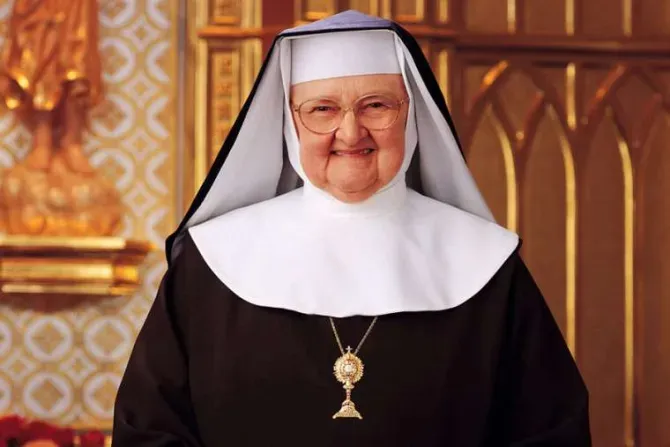
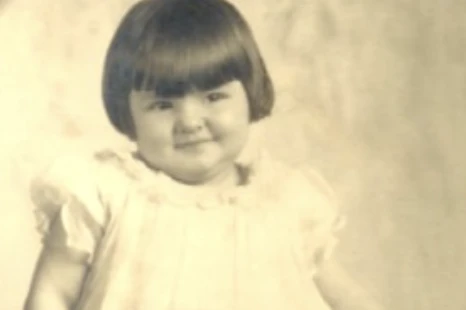 Mother Angelica as a child. Photo courtesy of the Mother Angelica Museum in Canton, Ohio
Mother Angelica as a child. Photo courtesy of the Mother Angelica Museum in Canton, Ohio
 Old St. Anthony's Catholic church in Canton, Ohio. Photo courtesy of the Mother Angelica Museum
Old St. Anthony's Catholic church in Canton, Ohio. Photo courtesy of the Mother Angelica Museum Mother Angelica when she was a majorette in high school. Mother Angelica Museum
Mother Angelica when she was a majorette in high school. Mother Angelica Museum
 The Timken Roller Bearing Company. Public Domain
The Timken Roller Bearing Company. Public Domain Rhoda Wise's home. Photo courtesy of Rhoda Wise Shrine, Inc.
Rhoda Wise's home. Photo courtesy of Rhoda Wise Shrine, Inc. Rhoda Wise's house as it is today, as a shrine. Rhoda Wise Shrine, Inc.
Rhoda Wise's house as it is today, as a shrine. Rhoda Wise Shrine, Inc. Sancta Clara Monastery in 1950. Mother Angelica Museum
Sancta Clara Monastery in 1950. Mother Angelica Museum Sancta Clara Monastery today. Photo courtesy of the Mother Angelica Museum
Sancta Clara Monastery today. Photo courtesy of the Mother Angelica Museum


